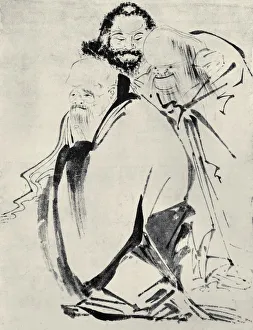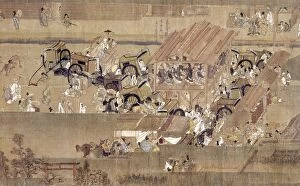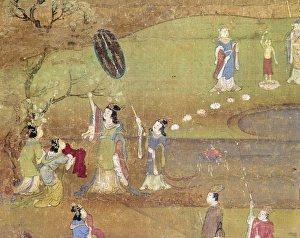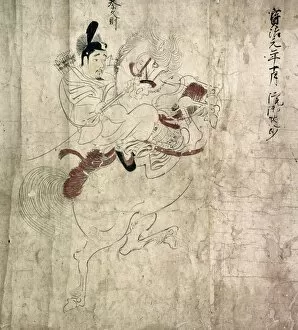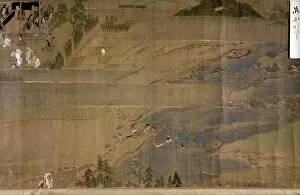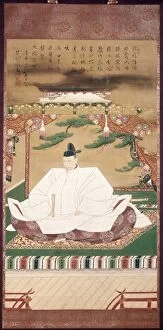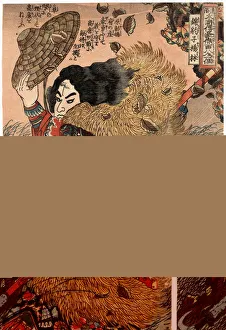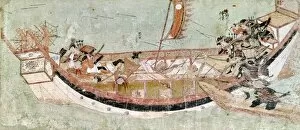Feudal Japan Collection
Feudal Japan, a captivating era of rich history and cultural exchange, comes to life through the intricate brushstrokes of Taiko Josetsu's scroll painting
All Professionally Made to Order for Quick Shipping
Feudal Japan, a captivating era of rich history and cultural exchange, comes to life through the intricate brushstrokes of Taiko Josetsu's scroll painting. As we delve into this mesmerizing world, we encounter Ippen Shonen, a wandering Buddhist priest whose dancing-praying ceremonies captivated townsfolk in the countryside. The year is 1299, and his arrival brings an air of spiritual enlightenment. In another silk painting from the early 13th century, Queen Maya reaches up to a branch in her garden as the Buddha emerges from her side – a symbol of divine birth and rebirth. This artwork transports us to an ethereal realm where spirituality intertwines with nature. But amidst these serene scenes lies intrigue and mystery - a dark-clad Ninja warrior stealthily moves forward with concealed weapons behind their back. Their masked face adds an aura of enigma that has fascinated many throughout history. Meanwhile, across distant seas, Will Adams becomes the first Englishman to set foot on Japanese soil in the late 16th century. A wood engraving from the 19th century immortalizes this momentous occasion when cultures collided and new chapters began. The arrival of Portuguese traders further transforms feudal Japan's landscape as they bring exotic goods and knowledge from faraway lands. Nobles and priests gather eagerly to witness horse races organized by these visitors – a testament to growing international connections during this time. Amidst all these external influences, daily life persists - farmers diligently lay seeds in paddies before flooding them for rice cultivation while Shinto rituals celebrate fertility with offerings of boiled rice to gods who bless their harvests. As we reflect on Feudal Japan through these glimpses into its past captured by various artworks and historical accounts, it becomes evident that this period was not just defined by samurai warriors or political strife but also marked by vibrant cultural exchanges between different civilizations spanning continents.

